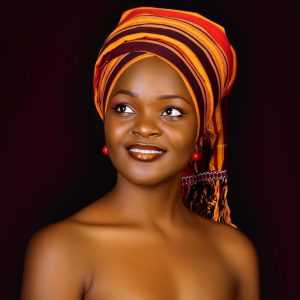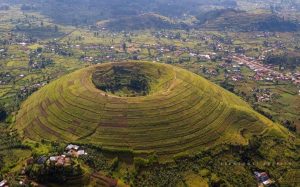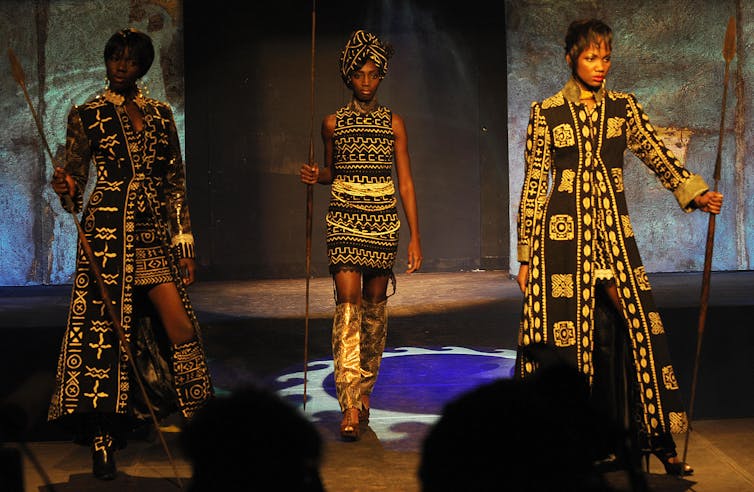Africa’s Key Developmental Challenges- Brain Drain
Kofi Ansah Left Ghana To Become A World Famous Fashion Designer - How His Return Home Boosted The Industry
Uganda Today: In the 1950s and 1960s, young Africans were assisted financially by their governments to study in western countries in the hope they would return to contribute to nation building. Individuals who qualified abroad and returned home formed the educated elites of immediate post-independent Africa.
Adapted from The Conversation
Over the years, the demography of such migrants has changed to include professionals who after graduation at home move abroad in search of employment and remain there permanently. This loss of human talent and skills – the “brain drain” – is arguably one of Africa’s key developmental challenges.
The migration of highly skilled professionals such as doctors, nurses, engineers and academics from Africa has serious economic, political and social implications for development.
But there is another side to the migration of skilled people. That is “brain gain” – the return migration of professionals – and “brain circulation” – temporary migration of professionals between countries. This is not well documented, especially in the case of African countries.

Ansah’s impact on Ghanaian fashion was immense because of the timing and context of his return in 1992. He had built a successful career for 20 years in the UK and the future looked promising. On the other hand, the country he returned to was undergoing profound political and economic transformation. Ghana was transitioning from military rule to a civilian government. Political tension was high, linked to an economic downturn following structural adjustment programmes adopted in the 1980s. But Ansah chose to relocate his budding career to Ghana.
His case demonstrates how the knowledge and expertise migrants gather through international career mobility can be converted into assets at an individual, national and international level. Returning migrants can transform traditional industries into modern, globalised ones.
Transforming Ghana’s fashion industry
We are researchers in sociology, African studies and geography who have been studying how internal and external migration and spatial context influence cultural and creative practice in Ghana. For the Kofi Ansah case study we interviewed 31 Ghanaian fashion designers whose career journeys had been directly and indirectly influenced by him. These interviews are supplemented by information from social media dedicated to Ansah and his works.
Kofi Ansah, who died in 2014, was from a creative family. His elder sister, Felicia Abban, was the official photographer of Kwame Nkrumah, Ghana’s first president. His elder brother, Kwaw Ansah, is an acclaimed film writer, director and producer.
After completing his secondary education, Kofi enrolled in the Chelsea School of Art in the United Kingdom to study fashion design. He made his first fashion headline after he designed a beaded dress for Princess Anne. Subsequently, he worked for several successful British fashion brands, including Gerald Austin and Guy Laroche, before establishing his own studio in central London in 1980.

Despite his early success on the UK fashion scene, Ansah returned to Ghana in 1992 to get fresh inspiration and “try to show people that we can use our fabrics for other things … We just have to work on it and make it commercial,” he explained during an interview.
The way cloth was produced locally, using strip loom technology, limited the volume of production. And the conventional styling of clothes limited their patronage. These were some of the features Ansah sought to change.

Ansah transformed Ghana’s fashion industry in four areas:
- Fabrics and design: His modern designs used African traditional cloth, such as kente and bogolanfini. Linked to these style changes was his collaboration with Woodin and the Ghana Textiles Production, two textile producing companies, to introduce the sale of fabric in single yards instead of the standard six yards. This made the cloth more accessible and functional. It led to the production of casual clothes, such as skirts, blouses, shirts, shorts and trousers, for men and women. He then introduced ready-to-wear clothing at Woodin.
- Accessories: Ansah was also passionate about promoting fashion accessories made with local materials. These included wood, raffia and his personal favourite, calabash. His runway designs always included stunning accessories. The use of prominent accessories has now become an integral element of African fashion shows.
- Production: Ansah was instrumental in the introduction of the Friday African wear policy in Ghana. This was aimed at promoting the wearing of local bespoke garments in workplaces on Fridays. Ansah used his friendship with then minister for trade and industry, Alan Kyeremanten, to push his idea to democratise and regularise the use of wax print. Ansah also influenced fashion production by employing international marketing strategies like fashion shows and exhibitions. He thus opened Ghanaian fashion to international audiences by using globally accepted techniques.
- Human capital: More importantly, Ansah’s vision to grow a lasting and successful industry propelled him to mentor many of Ghana’s finest contemporary designers. He partnered with international agencies to launch mentorship programmes for young designers.
One such programme was the Web Young Designers Hub, financed by the French Embassy and coordinated by Ansah and Franca Sozzani, former editor of Vogue Italia. Another project spearheaded by Ansah was the Ethical Fashion Initiative, a partnership between the United Nations and the Presidential Special Initiative programme. These programmes and the exposure that came with them positioned contemporary designers to engage in “brain circulation.”
By participating in projects, young designers had the opportunity to travel to other countries and learn about aspects of fashion such as fabric production and event organisation. Such travel was geared towards acquiring knowledge that would have an impact on Ghana’s fashion industry.
These engagements helped young fashion designers build networks with designers across the globe.
Ansah’s impact
The Ghanaian fashion industry is making its mark globally. Steve French and other young designers are recognised for their creative works and talents. Garments made by Ghanaian designers like Duaba Serwaa and Christie Brown are worn by stars such as Lupita Nyongo and Beyonce respectively. Young Ghanaians, too, proudly wear African clothes for all occasions. The current status of Ghana’s fashion industry is largely due to the efforts of Kofi Ansah.






